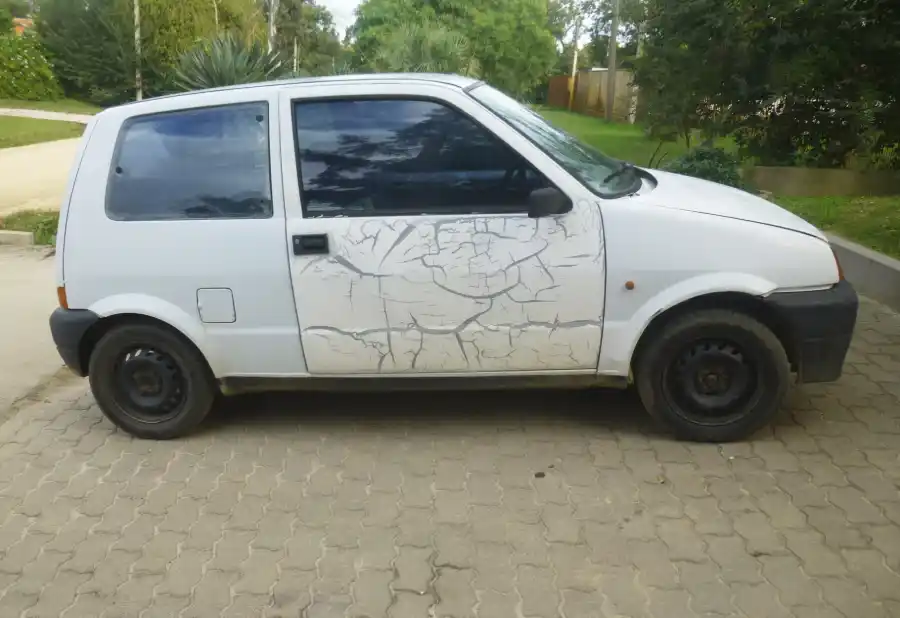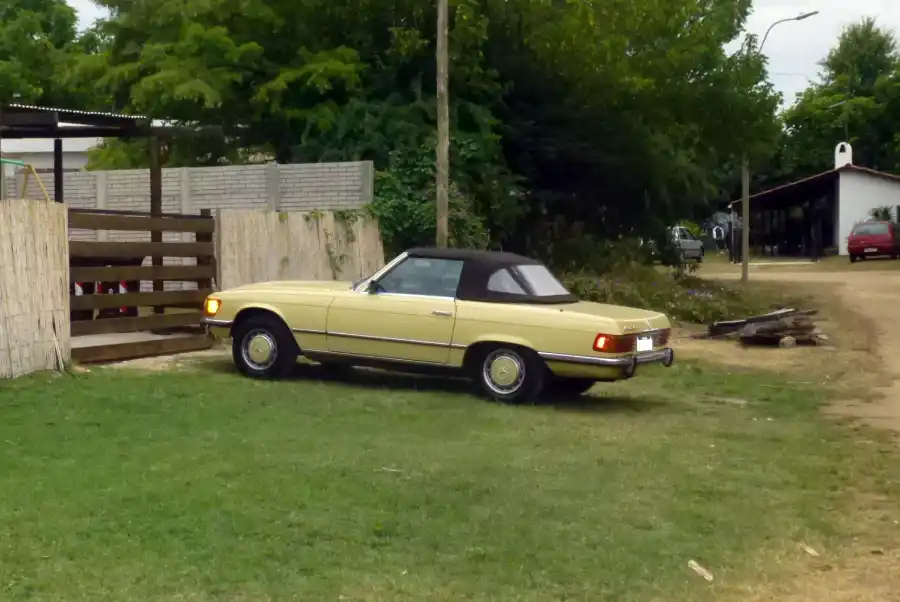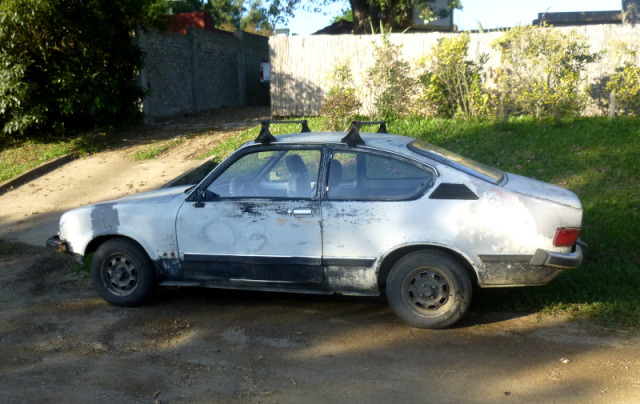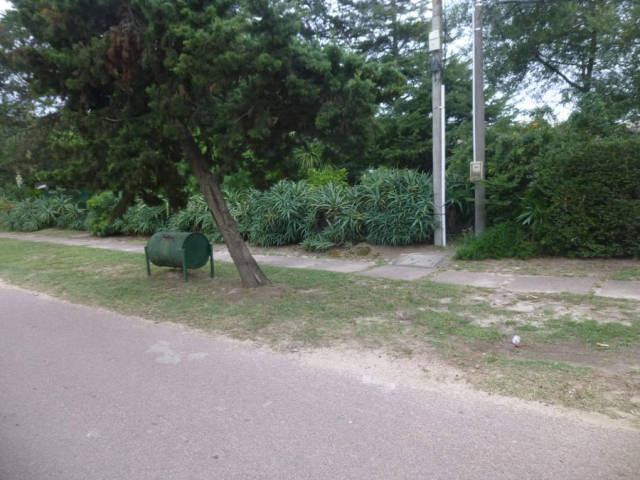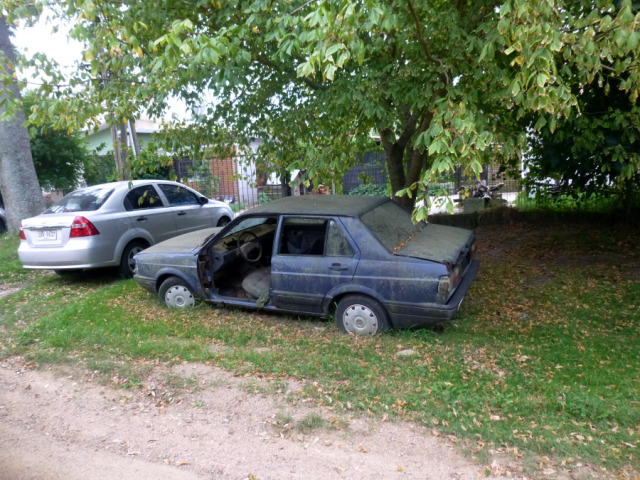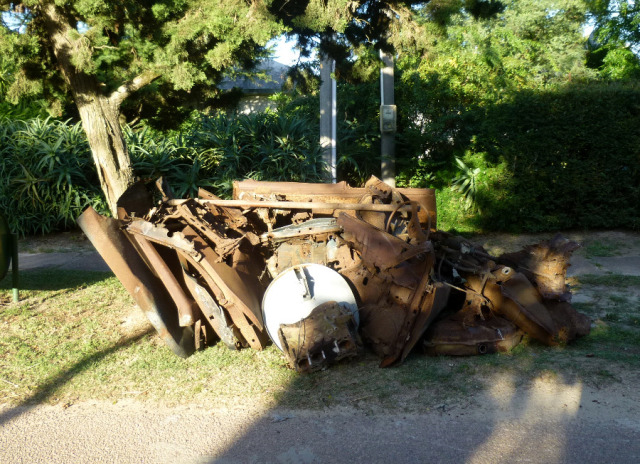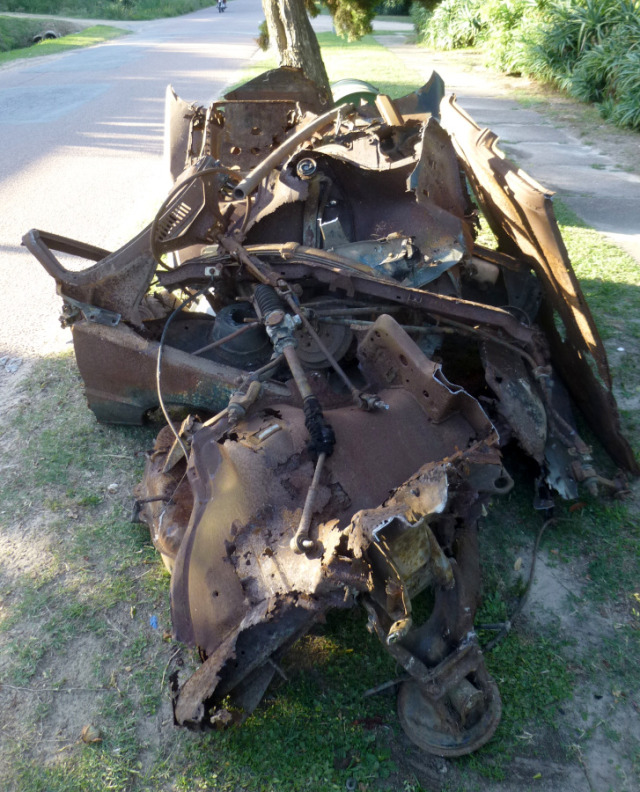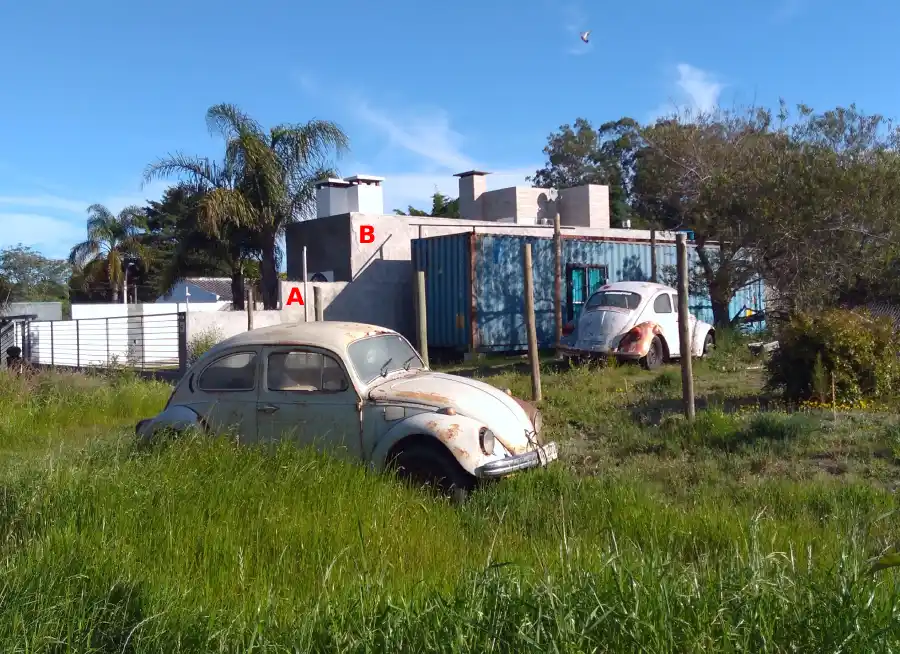
Welcome to Life among the Easily Amused.™
At our dog-walk takeoff spot, a nondescript lot has been divided between siblings. The kid* Pablo moved in a rather hideous container, obviously offensive to his neighbor—name unknown but friendly (and has poured money into his property)—who then raised his reasonable wall (A) to a pretty-sure-this-doesn’t-meet-code extreme height (B) to extinguish any view of Pablo’s architectural adventures from his home.
VW Beetles are called fuscas here. The origins of this name go back to how Germans pronounce Volkswagen, which sounds more like “folksvahgen.” That, shortened and pronounced in Brazilian Portuguese, morphed into “fusca.” (source). And Pablo had a rotting old white fusca that one can only guess he imagined bringing back to life one day, an amusingly ambitious idea.
Then, a couple weeks ago, what to our wondering eyes should appear but another rotting white fusca! A mate! A team? A farm?
Stay tuned.
Oh, and by the way, Pablo doesn’t live there, and has a drum set he’s (sort of) learning to play.
*context: anyone under 30
